Last Updated on 3 years by On Trends Gear
Planning on getting a perfect TV size for your home or office, sometimes it may seem slightly confusing since there is a lot of TV size comparison out there.
If you’re someone that likes shopping online for your gadgets, searching for the best size flat-screen TV can be complex especially when there are so many designs and sizes from different companies.
We will elucidate in detail the best sizes of flat-screen TVs that you can ever imagine.
This complete TV size comparison guide will help you when planning or making a buying decision for several TV size comparisons out there!
TV sizes are measured in inches, this helps the manufacturing company to implement some specific designs, specifications and features to various TV screen sizes.
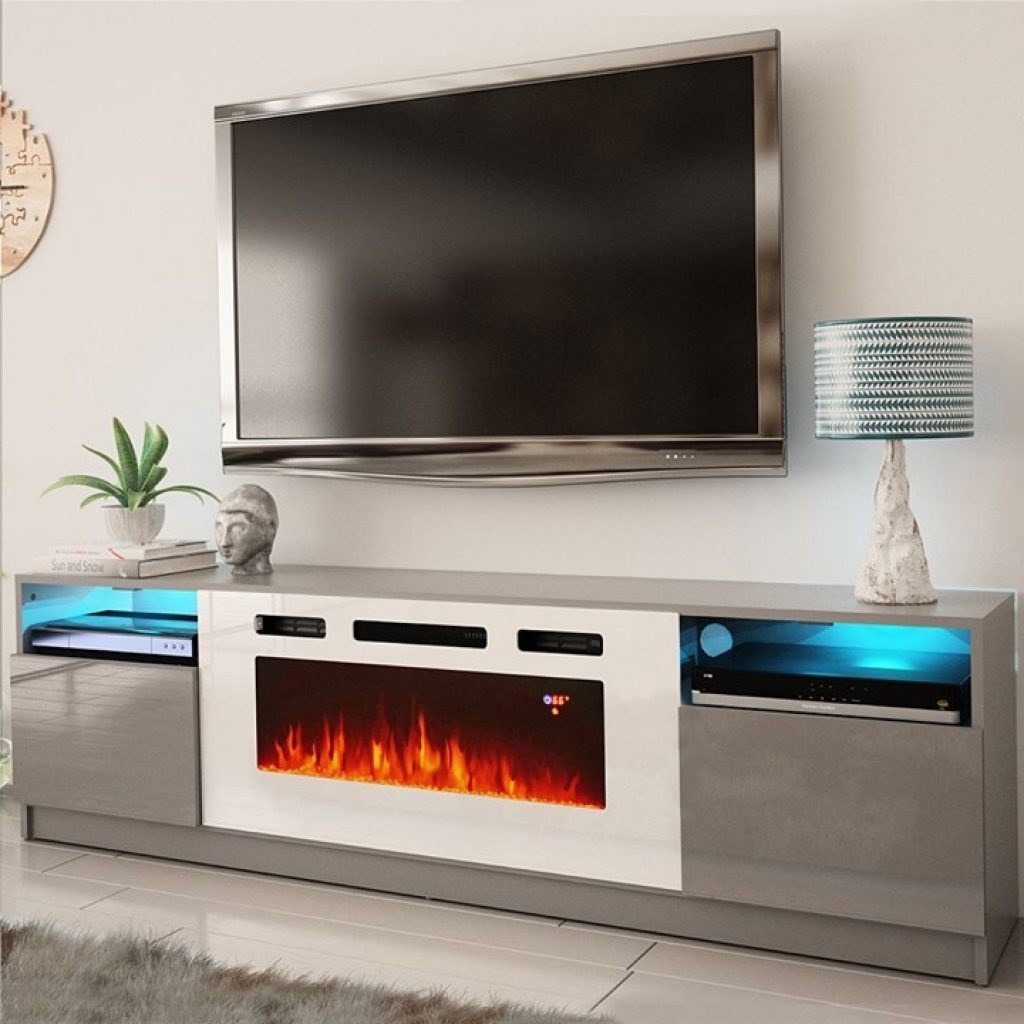
The ideal viewing distances for each of these TV screen sizes and resolutions also differ from each other because their displaying effects differ from each other.
We will give you a detailed information guide on how you can properly choose the best TV size comparison for your household and office, as well as standard TV sizes, how you can measure the size of a TV, etc.
Table of Contents
How Do I Choose a Perfect Flat-screen TV?- Follow the TV Size Comparison Guide
When planning to choose your TV screen size, there are so many factors to consider if you want to enjoy a quality display from your smart TV.
You have to consider the types of upscaling, the TV’s processor, the resolution quality, the colour quality, as well as the company design style.
Consider The Screen Size
The first thing we recommend for everyone who is planning to purchase a smart TV is to check the perfect sizes of flat-screen TVs which can give them exactly what they want.
While considering the size, you also need to find out the place you desired to mount the TV, the seating arrangement of the room or hall,
the number of audience or families intended to view TV events, and the exact location the TV is going to be placed.
Because if it’s placed close to the eyes, it may produce some side effects such as fatigue, loss of sight challenges etc, the TV should be placed some distance like two screen heights from the audience that is watching it.
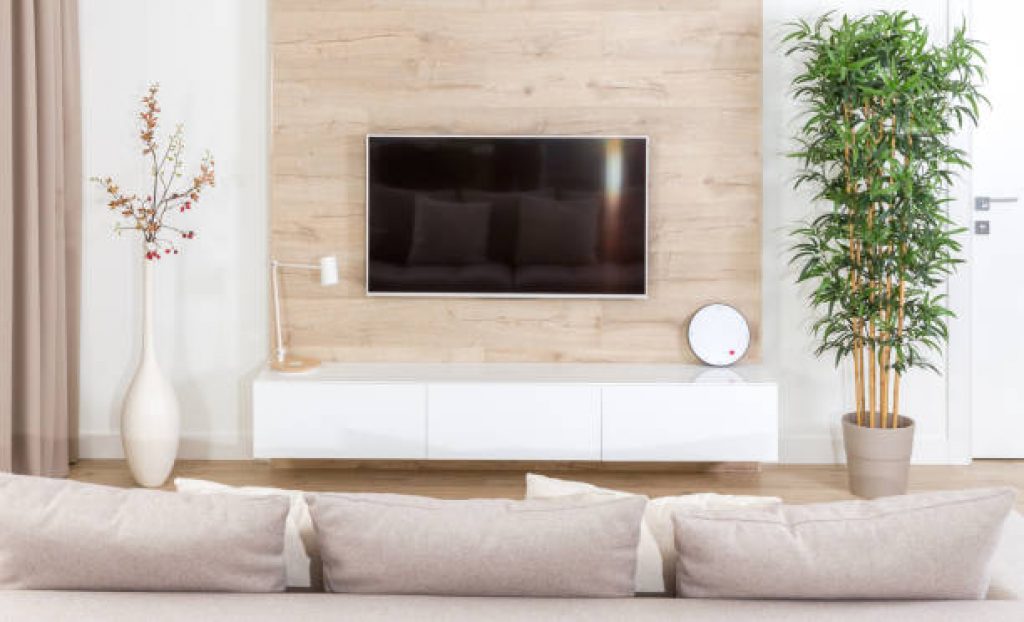
If you wish to place the TV on a wall, it should be mounted about four feet above ground level.
This is to make sure that the audience’s eyes are perpendicularly fixed on the centre of the TV screen.
Check If the TV has the Quality and Features that you want
Most TV manufacturing companies produce different kinds of TV for specific countries.
We recommend that you check the features that your country supported.
This issue of “countries compatibility” makes some TVs that are being shipped to another country sometimes develop internal faults due to some unconducive weather conditions.
Trusted and Popular TVs manufacturing companies with a lot of tested users always drop a review online, it can help to check how reliable and trusted those company’s products are;
and also the possibility they may improve their products in the future.
The features you need in a TV are quite personal; as one may want TVs that have internet access, full HD, TVs with Gorilla glass, full IC integrated 16 million colour TV, very flat and smart TVs, etc.
Considering the cost of the TV
Another factor that determines your effort in planning to get the best sizes of flat-screen TVs is the cost range.
Nobody wants to break the bank before buying stuff. Due to this fact; your plans of choosing a flat-screen flat-screen TV fully depend on your budget and the cash you have to accomplish that project.
The more features you desire in TV size comparison, the more technology, quality picture performance, high processing speed, and performance will increase your budget.
Some TVs with 4k and HDR may be cheaper than others with higher display performance and system operation as well.
Though, going for a low budget will give you low performance and display; even the service duration period may be short as well.
What are the different types of flat-screen TVs?
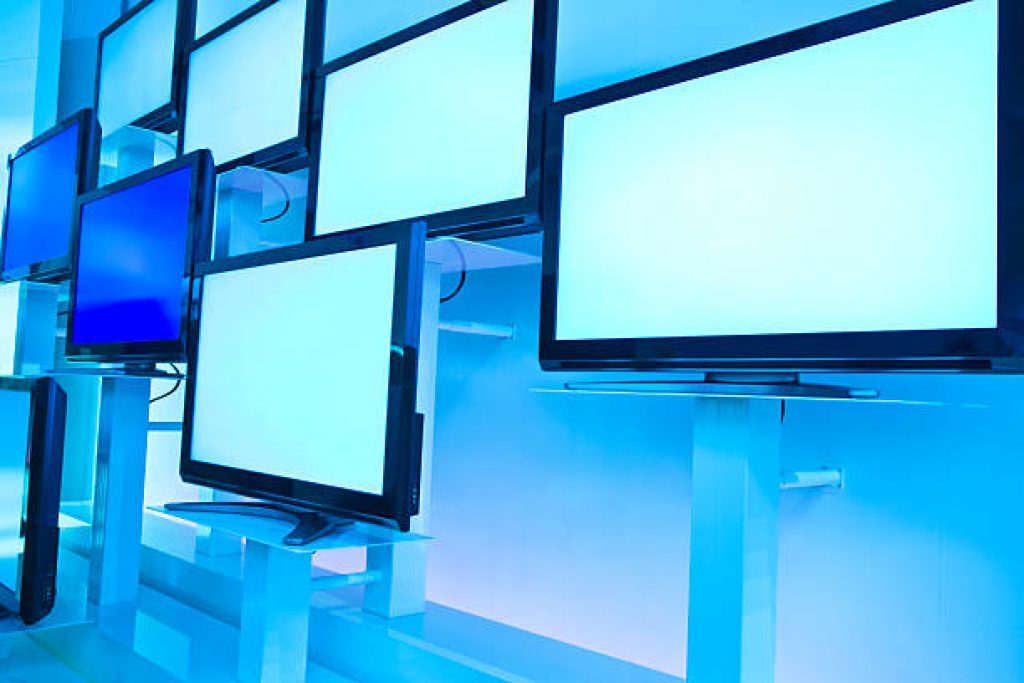
Technology is seriously advancing, unlike those days when there was nothing like a coloured TV in the market.
Some years back technology made a few modifications and the flat-screen TV evolved all over the globe.
The display that was used in the 19th and 20th was a product of the cathode-ray tube technology which made the TVs bulky and heavy.
But today smart TVs with super amazing features are out there and one can select the best that suits his purpose for getting these flat-screen TVs.
Below are some types of flat-screen TVs that are in high demand in the market today:
Quantum Light-Emitting Diode
The Quantum Light-Emitting Diode (QLED) offers a high display quality and they are also known as the next generation of LCDs.
Their screen is made of very small nanoparticles also known as quantum dots which are integrated into the LCD and help to gradually increase and decrease the brightness of the TV screens.
Although the new technology called OLEDSs has more advantages than QLEDs, in the sense that their resolution and display quality is far greater than other TV screen displays.
Though OLED screens are quite costly because of their value, features, and display quality.
Organic Light-Emitting Diode (OLED) Display
The Organic Light-Emitting Diode (OLED) is the type of display in which an organic compound emits light when it is exposed to electricity.
This organic compound usually contains either molecules or polymers as the case may be.
OLEDs don’t require backlighting because the compound it uses by default is light-emitting.
This screen type is mostly thinner than the LCD screen; the reason is that the filtering layers that are used in the LCDs are not being used here.
LED TVs
These TVs were produced by the combination of the technology from LCD TV, though some modifications and adjustments were made in it.
The display from this type of TV screen is really good mostly when it is being viewed from a distance.
In the market, today, LED TVs are phasing out because smarter technologies that have a long life span and fast processing speed, with super display quality have outranked its popularity.
LED TVs have been in existence for several years now and some people are still demanding it; because they are cheaper than other quality TV screen types.
Liquid Crystal Display (LCD)
This is the most common and most used TV screen type in the entire market even today.
This popularity emerged because of its amazing performance and cheap price.
The LCD screen display initiates pixels which help objects to be properly displayed between the segments of the screen.
What are the standard flat-screen TV sizes? – Complete TV Size Comparison Guide

When it comes to standard flat-screen TV sizes, consider the distance from the viewer to the TV position and the place you intended to mount the TV matters a lot;
because you may like a 65 inches flat-screen TV but there is no suitable place where you can mount it.
Different flat-screen TV sizes come with various TV size comparisons which include the width, height, and area; which are measured in inches for standard unique measurement.
Below is the list of the most preferable standard flat-screen TV sizes that are very popular and most used in the world today:
| Size | Width | Height | Area |
| 32″ | 27.9″ 70.9 cm | 15.7″ 39.9 cm | 438 in² 0.283 m² |
| 40″ | 34.9″ 88.6 cm | 19.6″ 49.8 cm | 684 in² 0.441 m² |
| 43″ | 37.5″ 95.3 cm | 21.1″ 53.6 cm | 791 in² 0.511 m² |
| 50″ | 43.6″ 110.7 cm | 24.5″ 62.2 cm | 1068 in² 0.689 m² |
| 55″ | 47.9″ 121.7 cm | 27″ 68.6 cm | 1293 in² 0.835 m² |
| 60″ | 52.3″ 132.8 cm | 29.4″ 74.7 cm | 1538 in² 0.992 m² |
| 65″ | 56.7″ 144 cm | 31.9″ 81 cm | 1809 in² 1.166 m² |
| 70″ | 61″ 154.9 cm | 34.3″ 87.1 cm | 2092 in² 1.349 m² |
| 75″ | 65.4″ 166.1 cm | 36.8″ 93.5 cm | 2407 in² 1.553 m² |
| 80″ | 69.7″ 177 cm | 39.2″ 99.6 cm | 2732 in² 1.763 m² |
| 85″ | 74.1″ 188.2 cm | 41.7″ 105.9 cm | 3090 in² 1.993 m² |
TV screen sizes are mostly measured in either inches or centimetres; with this, one can select the best sizes of flat-screen TVs that suit your bedroom, living room etc.
What is the most Popular Size of Flat-Screen TV?
We all know that TVs come in various screen sizes. Among all these TV screen sizes, some of them are very popular in the market today and they are frequently purchased by individuals and organizations.
This leads to TV size comparison which ranges from moderate to wide screens.
Upon your planned budget, the location you want to mount the TV and the audience that you’re targeting to watch the TV should be considered also.
The table above elucidated different TV screen sizes and how they are being measured.
We explained the 32-inch TV size down to the 85-inch size; with all their width, height, and area.
There are some adjustments in the flat-screen TV when compared to the old TVs that use vacuum tube rays.
The modern flat-screen TVs are rectangular while the old TVs are nearly square-shaped. This makes their viewing angles to be different from each other.
Below are the most popular size of flat-screen TVs in the market today:
24 Inches Flat-Screen TV
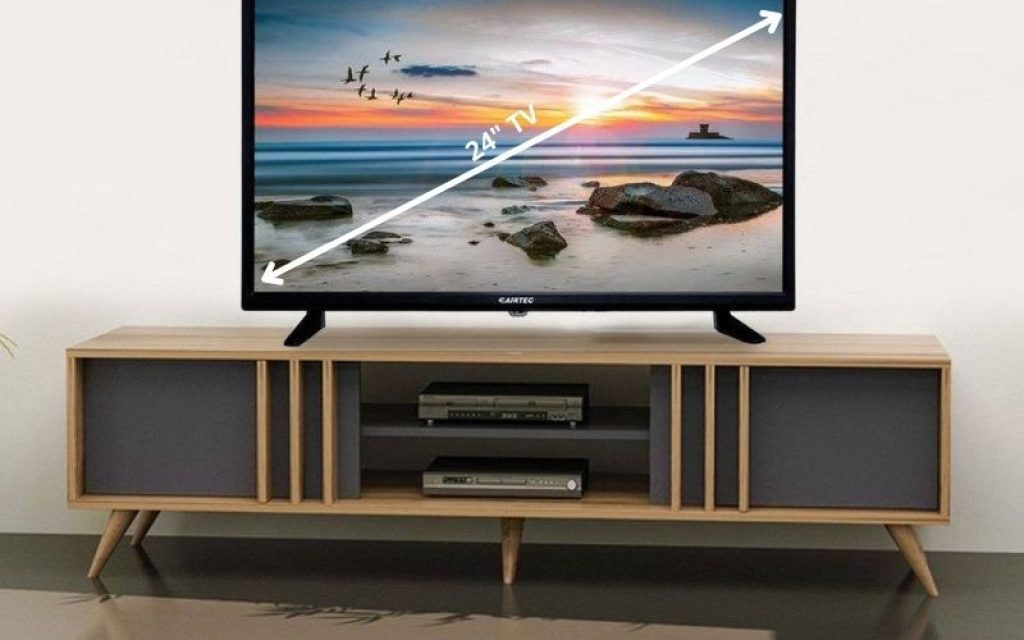
24 inches TV is categorized as one of the smallest flat-screen TV sizes that are selling in the market.
Because of its size, it is less expensive when compared to others.
Though its features are also limited since some integrated chips that power the most amazing effects in the bigger size flat-screen TVs are eliminated from this design.
Its small screen size also makes it more responsive; this means that one can use the 24 inches size TV almost everywhere that he wants.
And also It is quite easy to carry everywhere, probably if you wanted to relocate from one place to the other.
28 Inches Flat-Screen TV

This is another flat-screen TV size that is also small but slightly bigger than the 24 inches TV.
This is most preferred as the primary flat-screen TV size for living rooms.
since we might need the remaining available space for other facilities in our rooms.
Because of its size, viewers can as well view it from a bit far away.
32 Inches Flat-Screen TV
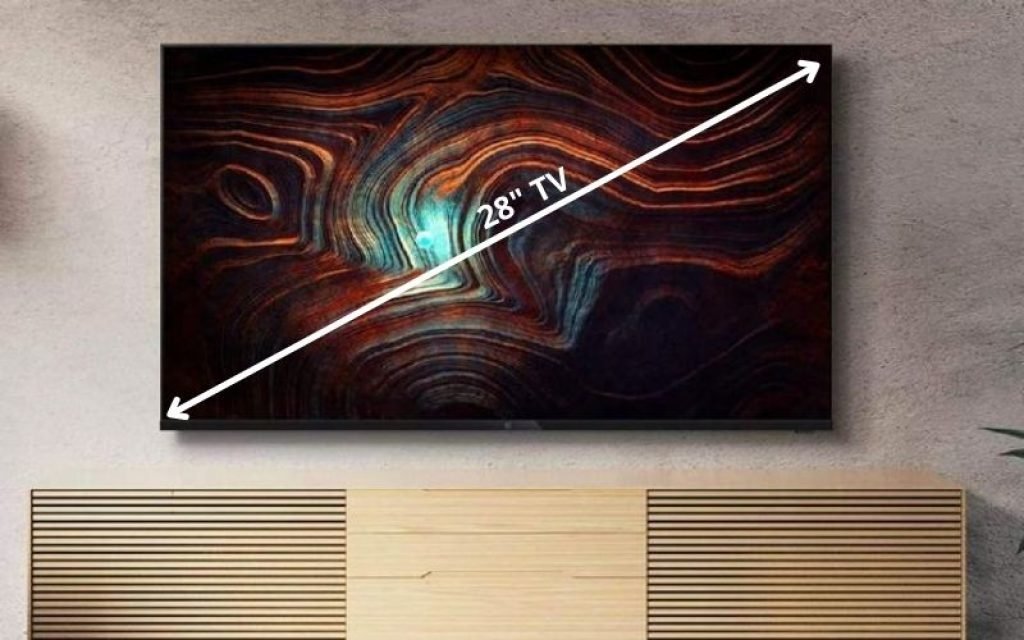
This is categorized as the average size of flat-screen TVs in the market.
It can also serve in the living rooms, especially for people that like magnifying objects with their TVs.
Its amazing portable size allows it to be viewed from a few meters’ distance from where it is being mounted.
This TV screen size can serve perfectly in studios, where viewers can be very close to the screen.
42 Inches Flat Screen TV
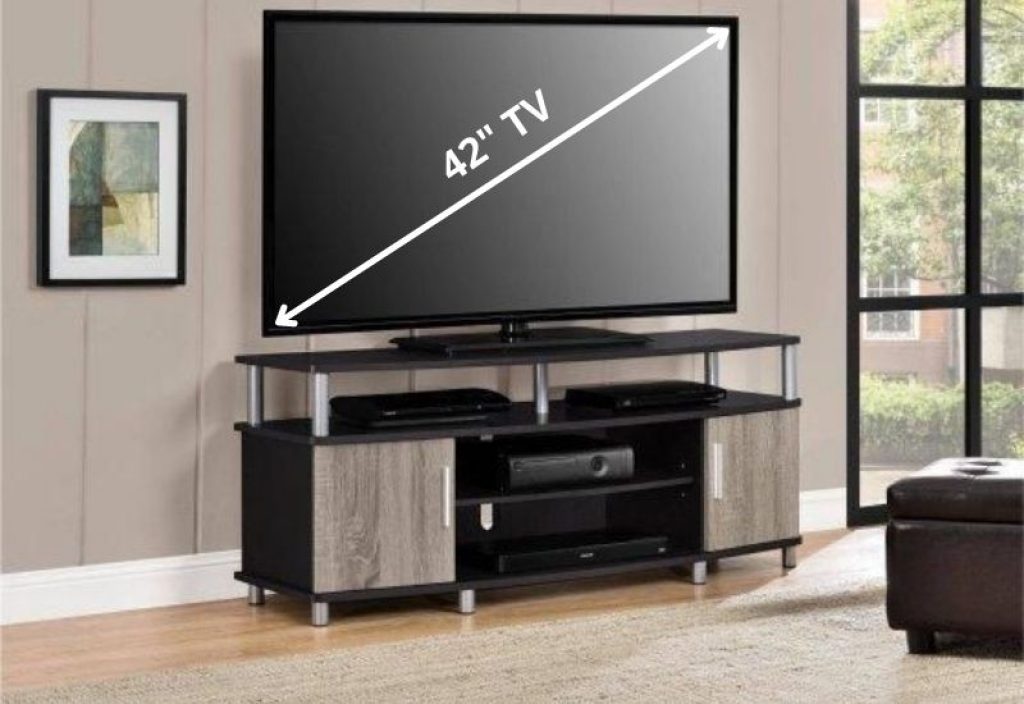
This TV screen size is also very popular in the market today since most people like furnishing their apartments with eye-catchy objects.
For instance, when the 42 inches TV is mounted in a sitting room, everyone that comes across that area will be attracted to the TV, regardless of the program that is being displayed.
This screen size is large enough to enjoy whatever thing you will ever need from TV screens.
65 Inches Flat-Screen TV
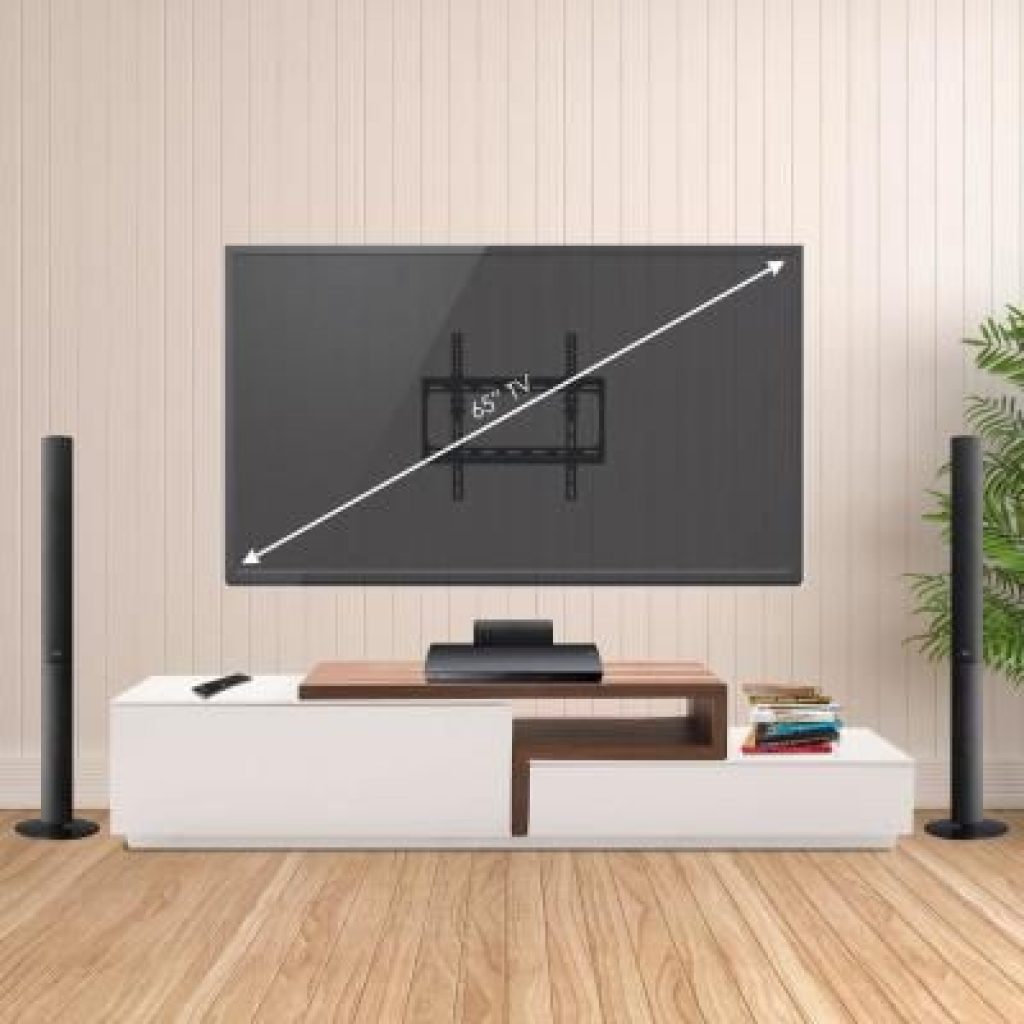
This is a big-screen TV size that is mostly used in the viewing centres since the target audience is many and can as well viewed from a far distance.
Because of its size, it is not recommended in sitting rooms as they will accumulate other available spaces for other things.
For some people that have a master room, the TVs size is large enough to accommodate the 65 inches TV, so purchasing the 65 inches TV is very advisable;
since the viewing experience will be awesome as the events are happening live in your location.
How to calculate the best size TV for your room
When calculating the best size TV for our living places, determining the screen resolution, the minimum viewing distance, and the size of the TV should be put into consideration.
Also, the scientific principles that ensure the effectiveness of our site should be considered as well; so that we will not damage our eyes when watching our TVs.
Related
The angular resolution determines the point where our eyes can be able to differentiate separate particles from the objects that the TV displays.
This is the point where we consider people with short-sightedness and long-sightedness because TVs are manufactured for everyone.
People with short-sightedness can only view objects that are closer to them and using large TV screens may affect their eyes since those TV screens are designed to be viewed from afar.
Conclusion TV Size Comparison
What are the best sizes of flat-screen TVs? It just takes a little calculation to figure out the best size TV for your room.
The common TV panel sizes available today are 32, 40, 42, 46/49 and 55 inches etc…
We have provided some tips to pick the right TV size for the best viewing experience inside this complete TV size comparison guide.
You must choose the best flat-screen TVs that have the best display, best resolution, etc perfect screen size for your bedroom or kitchen.